A Corporate Strategy for Supporting LGBTQ Rights in the Age of Boycotts
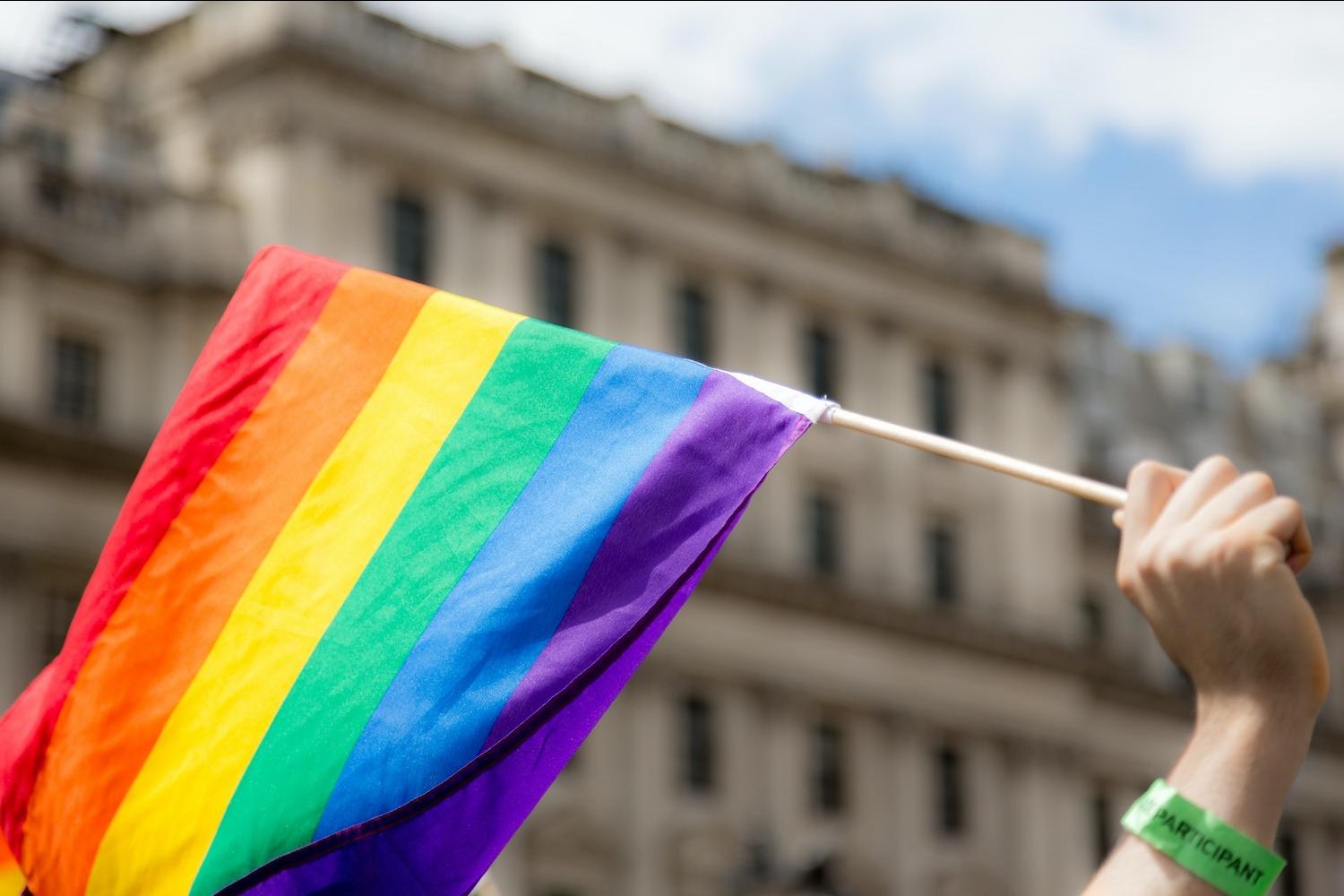
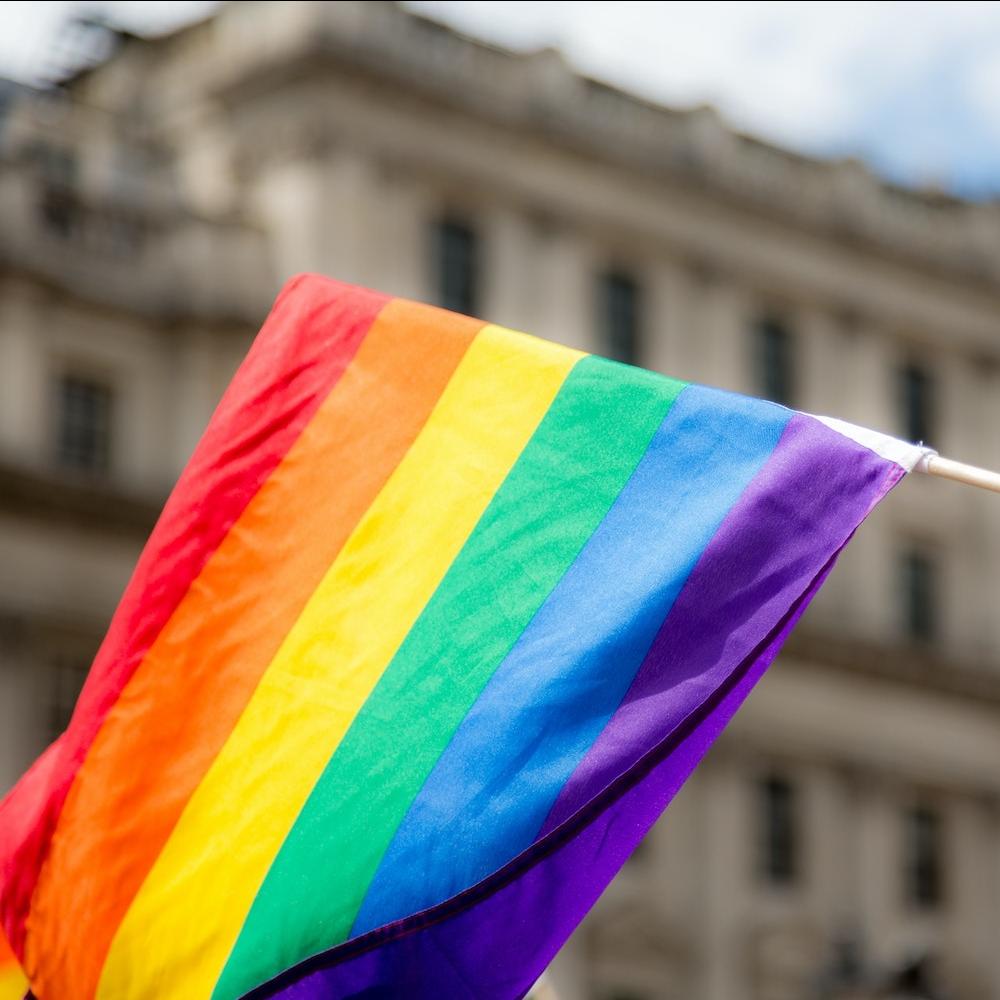
Navigating a politically fractured landscape and a torrent of social media-fueled boycotts is a complex exercise, but it does not have to be a difficult one. Brands that focus on core values that support all stakeholders — corporate, customer and employee — will be less vulnerable to reputational damage from boycotts and more likely to continue thriving in an increasingly diverse society.
When boycotts work
A boycott can stir up considerable media attention, but that doesn’t necessarily mean it can succeed in forcing a business to change its behavior.
In fact, consumer boycotts can be notoriously difficult to sustain. Starbucks is a case in point. The brand has weathered a string of boycotts in recent years, all to no effect.
On the other hand, research shows that boycotts can be effective when they target a brand that is already experiencing reputational decline. Social media exacerbates that reputational effect by handing a bullhorn to millions of otherwise voiceless people.
Aligning corporate culture with consumers
The social media effect makes it all the more important for brands to know the values of their customers, especially in the context of political polarization.
A 2019 article in KelloggInsight, the magazine Northwestern University’s Kellogg School of Management, underscores that point. Writer Samantha Eyler-Driscoll explained that the largely urban, liberal clientele of SoulCycle pushed back vigorously when news surfaced that the chair of its parent company was planning a campaign fundraiser for former U.S. President Trump. Conversely, a conservative-lead boycott against Nike and its spokesperson Colin Kaepernick failed to gather traction. Instead, strengthened its reputation among its core consumers, including younger consumers and liberal-leaning sneaker fans.
The recent episode involving AB InBev paints a more nuanced picture. The company’s best-selling Bud Light brand came under withering fire from conservatives in April, after Bud Light gifted a special-edition can to the transgender actor, activist and social media influencer Dylan Mulvaney. Beer drinkers on the left were also outraged when AB InBev failed to push back strongly. Sales of Bud Light plunged in May, though AB InBev is still having a banner year overall and some analysts expect the Bud Light brand to recover over the long term.
Two food industry giants take a stand
In a contrast to AB InBev’s stumbling response, the leading U.S. food service brands Chick-fil-A and Cracker Barrel seem to have breezed over two recent social media incidents of their own. In both cases, the transition from a conservative corporate culture to a more inclusive one appears to have had an impact.
Chick-fil-A is privately owned by members of the Cathy family, through which the brand has become known for anti-LGBTQ activism. However, over the past 10 years the company has taken steps to cut ties with anti-LGBTQ groups while also expanding its environmental stewardship profile.
The crossover from environmental sustainability to social inclusiveness seems to have grown in recent years. The company established the position of vice president for diversity, equity and inclusion as far back as 2021, if not earlier, and its website includes a detailed message about its DEI policy.
The trouble began on May 31 when a single social media post mischaracterized the vice president’s role as a new position. The post set off a firestorm of calls for a boycott from conservatives, to which Chick-fil-A has not formally responded as of this writing.
Silence could be the most effective strategy in this case. After all the work Chick-fil-A has undertaken to change its behavior and move past its anti-LGBTQ image, it is unlikely for the company to allow one social media episode to set it back.
Food habits are hard to break
As a food service company, Chick-fil-A is also shielded by the fact that food habits are notoriously hard to change. In her article for KelloggInsight, Eyler-Driscoll cites School of Management professor Brayden King, who has done extensive research on boycotts “Consumers tend to have an empowered voice but weak behavioral will,” King told her.
“Some people expressed the belief that they had engaged in a boycott, but when we look at their actual purchasing behavior, there’s no difference in purchasing between those who believed they’ve boycotted and those who did not support the boycott,” he added.
The twin dynamic of food and habit appears to be at work in the case of Chick-fil-A and Cracker Barrel. The latter came under fire from conservatives last week when it posted a photo of its signature front porch display of rocking chairs, including one painted in rainbow stripes.
“We are excited to celebrate Pride Month with our employees and guests,” the post read. “Everyone is always welcome at our table (and our rocker). Happy Pride!”
As with Chick-fil-A, Cracker Barrel has not responded to the calls for boycott. Most likely, it will not. The company still has a solid footing in its conservative image, but it has also been reaching out to accommodate the more diverse tastes of today.
In one indication of the company’s ability to manage social media adversity, Cracker Barrel survived another conservative media firestorm last summer after it added a plant-based sausage to its menu.
Despite the recent torrent of anti-ESG activity and rhetoric about “woke” businesses, Cracker Barrel has also continued to advocate for environmental, social and governance practices on its website and expand its ESG reporting. “We have committed to drive environmental, social and governance (ESG) issues forward,” the company states. Stepping back from those commitments over one social media episode is unlikely.
ESG is good for business
Eyler-Driscoll cautions that a high-profile, media-enabled boycott could damage a company’s reputation, even if it has little or no direct impact on consumer behavior. The reputational factor could spill over into employee recruitment and retention, for example.
In that regard, ESG principles that attract customers and clients can also provide a risk-avoiding shield.“Savvy companies that do try to connect with customers on a personal level often choose, of their own volition, to engage in corporate social responsibility activities, such as building sustainable supply chains, developing worker-friendly policies, or engaging with various communities,” Eyler-Driscoll noted.
“The key is for companies to know who they are, and who their core stakeholders are, and what those stakeholders believe in," King said.
With public opinion firmly on the side of ESG principles, even conservative-leaning brands have plenty of incentive to stick to the principles of civil rights and social progress, regardless of boycott threats.
Image credits: Ian Taylor and Sara Rampazzo via Unsplash
What Are Anti-ESG Funds, and Should Sustainable Investors Be Worried?


The political pushback against "woke capitalism" continues, extending from how brands engage with Pride Month to how they source their energy.
In the financial sector, anti-woke campaigners have set their sights on the use of environmental, social and governance (ESG) factors in investing. Fund managers say they use ESG criteria to manage risks tied to things like climate change and human rights. But the anti-woke set claim that ESG screens dampen investor returns and pressure companies to follow a particular "political agenda."
We've read plenty about the burgeoning "anti-ESG" movement, led primarily by a small set of right-wing politicians and pundits. But have you heard of "anti-ESG" investment funds? Yes, such an animal exists, and a Morningstar analysis published last week offers a closer look.
"This is the first time that Morningstar systematically looked into anti-ESG funds," Alyssa Stankiewicz, associate director of Morningstar's sustainability research division, said on a call with reporters last week. "It's always kind of fun to start research from the ground up that hasn't been done, and I think we learned a lot along the way."
What are anti-ESG funds?
As with the "anti-ESG" term more broadly, the designation of anti-ESG funds can mean different things to different people. Morningstar breaks the funds down into five categories.
- Anti-ESG: These funds use ESG data to build their portfolios "by tilting toward companies that management believes are unduly penalized by ESG ratings providers," according to Morningstar's analysis.
- Political: These funds grew out of the backlash against "woke capitalism." They decry ESG screens as part of the "liberal agenda" and tend to "invest in companies believed to be supportive of conservative-values-aligned policies," the report reads.
- Renouncer: These funds "previously claimed to adhere to ESG investing principles but subsequently removed references to ESG principles from fund names and documents for fear of being associated with the ESG movement" amidst political backlash.
- Vice: These funds "invest in companies traditionally excluded by socially responsible or ethical funds" (think: "sin stocks" in sectors like tobacco, weapons and gambling).
- Voter: These funds are passive and track specific sectors or market indexes, with "voting policies in opposition to ESG principles."
"We took a pretty broad approach to searching for the funds that could be considered anti-ESG funds, and we wound up with 26 funds in the Morningstar Direct database, which we analyzed by their prospectus language, their marketing materials, and different portfolio characteristics," Stankiewicz said.
Some of these funds — particularly "vice" funds made up of sin stocks — have been around since the early 2000s, but things "really took off in the third quarter of last year," Stankiewicz said.
That's when biotech entrepreneur Vivek Ramaswamy founded Strive Asset Management with backing from investors like Peter Thiel. The company billed itself as an aspiring BlackRock competitor that wouldn't pressure the firms in its portfolio to “push political agendas," Ramaswamy said at an event in December, as quoted in the New Yorker.
Strive made a big splash in the news given rising anti-ESG rhetoric, and its introductory fund — the Strive U.S. Energy ETF — was well received among investors, attracting "nearly $100 million in its first week and more than $300 million in its first month," according to Morningstar.
While Ramaswamy referenced the anti-ESG push in his public remarks about the firm, Strive's "prospectus filings include no reference to ESG principles, for or against," Morningstar found. Instead it offers seven passive, exchange-traded funds (ETFs) that track markets like energy and semiconductors, as well as indexes tied to things like dividends and growth potential. "The key differentiating factor from other passive funds is their proxy-voting policies, which state that the firm will generally oppose environmentally or socially motivated shareholder proposals," the report reads.
As such, Strive's funds make up all of Morningstar's "voter" category. Believe it or not, only one fund — Constrained Capital's ESG Orphans ETF — made it into the "anti-ESG" category, meaning it was founded with the expressed purpose of investing in companies that are supposedly disadvantaged by ESG screens. "Political" funds include the American Conservative Values ETF, launched in 2020 with messaging that called on investors to move their money away from supporting the "woke/liberal agenda."
"It is important to note that Morningstar does not view ESG investing as specific to any one political party, but the recent explosion in anti-ESG sentiment is driven primarily by a vocal subset of Republican politicians," Stankiewicz and fellow Morningstar analyst Mahi Roy wrote in the report.
How are anti-ESG funds performing?
Their name may be on-trend with current rhetoric, but these funds aren't exactly catching on with investors. Flows into anti-ESG funds peaked at $376 million in the third quarter of last year, according to Morningstar's analysis. But 80 percent of that came from a single fund: Strive's U.S. Energy ETF.
"What started as a downpour slowed to a drizzle," Stankiewicz and Roy wrote in the report. Strive's six following fund launches received a muted reception, attracting roughly $5.5 million monthly since they launched. Interest in the other funds Morningstar studied has remained flat, and the sole fund in the "anti-ESG" category — Constrained Capital's ESG Orphans ETF — filed to liquidate at the end of this month due to lack of capital.
Are anti-ESG funds really anti-ESG?
Despite the marketing on these funds, many aren't all that distant from ESG principles when it comes to how the companies in their portfolios do business, Morningstar's research revealed. "Half of the funds in our list did carry above-average ESG risk" compared to the Morningstar U.S. Market index, Roy said on the press call. But researchers were surprised to learn that many are also heavily linked to positive environmental and social impacts.
"Some of these funds, as much as they are a part of controversial industries, they also do have exposure to, for example, climate action or basic needs," Roy explained.
The American Conservative Values ETF, for example, has a Morningstar Sustainability Rating of 4 out of a possible 5, while the Strive 1,000 Dividend Growth ETF earns a 5 out of 5.
"We also actually did a holdings comparison," Stankiewicz said. "There were some distinct holdings ... some of which were renewable energy companies that were in Strive's portfolio that weren't in BlackRock's portfolio. Strive doesn't purport to invest for or against ESG ratings according to their prospectus. It's mostly about voting. But it is still interesting to observe the differences in holdings."
Further, "many portfolios in our list have high levels of alignment to climate action impact," the report reads. "For instance, 84 percent of Strive U.S. Semiconductor ETF’s SHOC portfolio is involved in climate action impact, a whopping 48-percentage-point overweighting relative to the benchmark, followed by Strive 1000 Growth ETF and Strive 500 ETF at 43 percent and 36 percent, respectively."
The bottom line
With only a few hundred million dollars invested on a quarterly basis between them — compared to over $6.6 trillion across all U.S. ETFs last year — anti-ESG funds shouldn't exactly leave sustainable investors shaking in their boots. And the connection to positive impacts also indicates they aren't doing much to dampen sustainability objectives.
Meanwhile, funds with ESG screens are on the rise after slowing in 2022. The Morningstar Global Markets Sustainability Index rose by 10.2 percent in the first five months of the year, compared to a 9.5 percent return for the Morningstar Global Markets Large-Mid Cap Index, according to a May analysis.
Even so, Morningstar plans to keep an eye on anti-ESG funds and how they develop into the future, analysts said.
Image credit: Sam Valadi/Flickr
How Wave Energy Can Help Transform America’s Ports


A wave energy station operated by Eco Wave Power.
The vast shipping ports of the U.S. remain stubborn epicenters of climate-warming greenhouse gas pollution, despite various efforts over the years to reduce emissions. That is about to change. New electrification technologies offer a toolkit for making significant, permanent improvements in air quality, and wave energy converters are poised to play an important role.
Pollution, ports and electrification
Businesses seeking opportunities to cut their value chain emissions and contribute to environmental justice can meet a stumbling block at U.S. ports. The U.S. Environmental Protection Agency (EPA) warns that diesel engine emissions at ports continue to expose millions of people in nearby communities to health risks from particulate matter, nitrogen oxides, ozone and other toxins. That’s in addition to impacting the climate with carbon dioxide emissions and nanoscale airborne particles called black carbon.
In a 2016 assessment of port emissions, the EPA observed that reducing emissions from individual diesel engines is an important step forward but ultimately not a sustainable solution. The agency anticipated that port activity would continue to increase in the coming years, propelling a rise in diesel emissions overall.
Clearly, new strategies are needed to address the urgency of climate action, and the EPA has identified electrification as a point of focus. “For example, the potential for replacing older cargo handling equipment with electric technologies is significant, with [carbon] emissions being reduced in 2030 by up to 18 percent and in 2050 by up to 45 percent as compared to the Business as Usual case,” the EPA explained in the 2016 assessment.
On May 5 of this year, the EPA followed up with the launch of two port-decarbonization programs funded through the Inflation Reduction Act. An allocation of $3 billion will build on the agency’s long-running Clean Ports infrastructure program, and another $1 billion will go to the Clean Heavy-Duty Vehicle program.
“The Clean Ports Program builds on [the] EPA’s existing Ports Initiative and will transform port infrastructure while boosting investments for zero-emission port equipment and technology that reduces climate and air pollutants and improves air quality at ports and surrounding communities,” the agency explains.
The Clean Heavy-Duty Vehicle program is aimed at offsetting the cost of replacing older vehicles with new zero-emission models. That includes both battery-electric and fuel-cell-electric vehicles, both of which will require new charging and fueling infrastructure.
Laboratories of change at America’s ports
The missing link in these two programs is a ramp-up in the supply of clean electricity for port operations, including electric vehicles and other equipment. Port planners will also need to consider security, resiliency, and the scale and availability of renewable energy. That will mean focusing attention on opportunities to generate electricity on site.
The Port of Los Angeles has aggressively pursued a more sustainable energy profile since 2006, and it provides a good example of the opportunities and challenges for onsite renewable energy. Much of the activity at the port takes place in the open air, precluding the installation of large-scale solar arrays on rooftops. But some roof space is still available.
The public-private ocean institute AltaSea, for example, recently installed 4,753 solar panels on the roof of its new Center for Innovation at the Port of Los Angeles. The port is also constructing, or has already installed, solar arrays at parking lots, berths, underused sites and several other buildings. The port anticipates 10 megawatts of additional solar power when all planned onsite installations are complete, accounting for about a sixth of its overall power demand.
That is an impressive start, but there is still a long way to go. With limited opportunities to install wind turbines on site, wave energy converters could fill the gap.
Wave energy converters are mechanical devices that use the natural motion of waves to generate electricity. They transfer kinetic energy from the moving water to a generator.
Wave energy technology has attracted considerable interest over the years due to its enormous potential, especially along the West Coast of the U.S. In theory, wave energy alone could have accounted for more than 64 percent of all utility-scale electricity the country generated in 2021, according to the U.S. Energy Information Agency.
Wave energy is finally having a moment
Despite years of activity in the experimental stage, wave energy has yet to emerge in the U.S. energy market with anywhere near the speed and saturation of wind and solar power.
Inna Braverman, co-founder and CEO of the wave energy company Eco Wave Power, attributes part of the lag to a series of high-profile setbacks when the industry was first developing in the early 2000s.
At the time, wave energy converters were designed for use in the open ocean. One especially notorious failure was the “big red snake,” an articulated wave energy converter that launched three miles off the coast of Portugal in 2008 to great fanfare. The device encountered problems almost immediately, and it was eventually declared a failure.
That episode may have cooled investor interest somewhat, but the potential for an enormous renewable energy payoff continues to attract interest. Hawaii, for example, includes wave energy in its plans to transition to 100 percent renewables. The U.S. Department of Defense and Department of Energy also continue to fund wave energy research projects in Hawaii and the Pacific Northwest.
In the meantime, Eco Wave Power (EWP) is gaining traction for another approach to site selection. Instead of tethering wave energy devices to an offshore location, EWP devices are adjoined to breakwaters and other existing shoreline infrastructure. The shoreline solution is finding an encouraging reception among port planners, Braverman said.
“Since we are not offshore, governments actually get excited. They want solutions for their port cities,” Braverman said.
A streamlined regulatory framework for portside wave energy converters would accelerate the process. “It might take as little as six months to install a 100-kilowatt, demonstration-scale project completely, including connections,” she said, but the actual rollout can take much longer without a supportive permitting process.
Because the technology is relatively new, financing can also be difficult to obtain, she said. “Optimistically, wind and solar had exactly the same problems with regulation and financing," she told us. "We just have to be patient and persistent.”
More renewable energy for the Port of Los Angeles and beyond
EWP has successfully demonstrated its wave energy converters at a former World War II ammunition jetty in Gibraltar since 2016. The 100-kilowatt pilot project logged almost 50,000 hours of grid-connected power generation until 2022 when it relocated to the Port of Los Angeles with the support of AltaSea.
The AltaSea pilot project showcases new upgrades to the EWP wave converters, and it demonstrates that the equipment can be relocated as needs change. The company is also in talks with stakeholders in Spain, Morocco and Portugal, and it has another project underway in Israel.
Braverman anticipates that the AltaSea installation will serve as a demonstration project that stimulates interest in wave energy among other U.S. states. New Jersey and Georgia are two likely targets. “Seeing is believing,” she said.
Images courtesy of Eco Wave Power
Inside Australia's Plan to Save the Great Barrier Reef

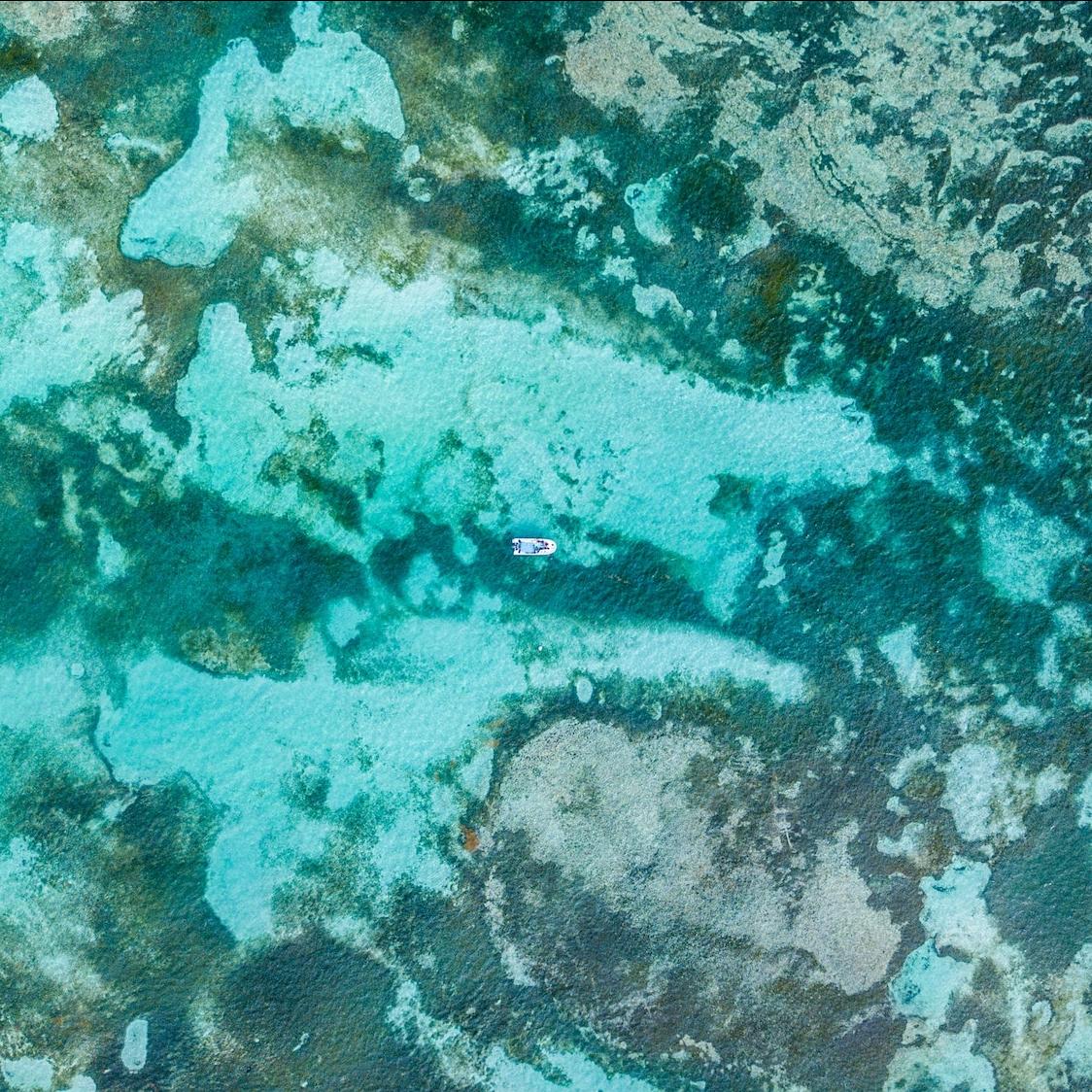
Last week the Australian government agreed to establish new policies to protect the Great Barrier Reef, after over a decade of campaigning from UNESCO’s World Heritage Marine Program. So what's the plan, and will it be enough?
"We have finally come to a constructive point"
Among other things, UNESCO (the United Nations Educational, Scientific and Cultural Organization) recognizes the most significant natural and cultural locations as World Heritage sites. Its World Heritage Marine Program includes 50 protected ocean sites across 37 countries.
The Great Barrier Reef, the largest and most diverse coral reef ecosystem in the world, is one of them. But it's threatened by rising ocean temperatures, poor water quality and pollution from agricultural operations, among other impacts.
The new measures will include a ban on some of the more destructive methods of fishing, compliance incentives for farmers to prevent synthetic fertilizers and other soil nutrients from flowing into waterways, and a total reduction in Australia’s greenhouse emissions.
Dr. Fanny Douvere leads the World Heritage Marine Program at UNESCO and oversees the organization’s conservation efforts around the world. “It has been over a decade that UNESCO has been alerting the world to the challenges in the Great Barrier Reef, but we have finally come to a constructive point in our exchanges,” she said.
What's the plan to save the Great Barrier Reef?
Last year, UNESCO conducted a monitoring mission to determine the greatest challenges that threaten the Great Barrier Reef. Based on what they found, UNESCO researchers created 10 recommendations for the Australian government to implement that could help save the fragile ecosystem.
A ban on gillnet fishing is one of the most consequential recommendations the Australian government agreed to include in the new plan. This highly destructive form of fishing uses large nets and is not selective about the types of species it catches. Vulnerable coral reef species, such as hammerhead sharks, turtles and dolphins, are often caught in gillnets. Australia will phase out gillnet fishing by 2027 and immediately close off vulnerable areas for gillnets.
Threats to the Great Barrier Reef go beyond fishing practices. Climate change is raising ocean temperatures and threatening the fragile coral reef ecosystem, which can only survive in a narrow temperature range. Additionally, coral reefs rely on photosynthesis, so they need clear, clean water that sunlight can penetrate. Sediment and nutrient discharge from nearby farms are devastating the water quality of the Great Barrier Reef, leading to algae blooms and blocking the sunlight needed for photosynthesis.
While climate change is an international problem requiring global cooperation, Australia can take measures to improve the Great Barrier Reef’s chances of survival.
“When we can reduce pressures such as poor water quality and gillnet fishing, we can build resilience in the ecosystem and coral reefs can withstand the effects of climate change better," Douvere said. "It can more easily recover from mass bleaching events when the reef is in as healthy a state as possible.”
Fighting climate change ensures a future for coral ecosystems
Emissions reductions are critical for the survival of the Great Barrier Reef, because coral reef ecosystems cannot survive if warming exceeds 1.5 degrees Celsius above pre-industrial temperatures.
The Australian government also committed to greater emissions reductions to fight climate change. The country signed its first climate law after UNESCO's mission last year. It calls for a 43 percent cut in emissions by 2030 and established an independent climate authority to advise the government on setting further emissions reduction targets.
What's next?
Australia has committed a total of $2.9 billion to the new safeguarding measures for the Great Barrier Reef. Douvere noted that there could be economic pain points for farmers and fishermen affected by Australia’s new policies, but the Australian government has financed programs to help ease the transition.
“Biodiversity and climate change are hugely important for everybody," she said. "We are not working to save these places just because we love going to these places, but rather because they are incredibly important places for everybody, including the financial sector. The Great Barrier Reef makes an annual contribution to the GDP of Australia of $6 billion to $7 billion on an annual basis. The whole environmental system is underpinning our economy.”
Image credit: Osman Rana and A. Shuau (Obofili) via Unsplash
Why It Makes Sense for Companies to Scale Back Unrealistic Net-Zero Targets
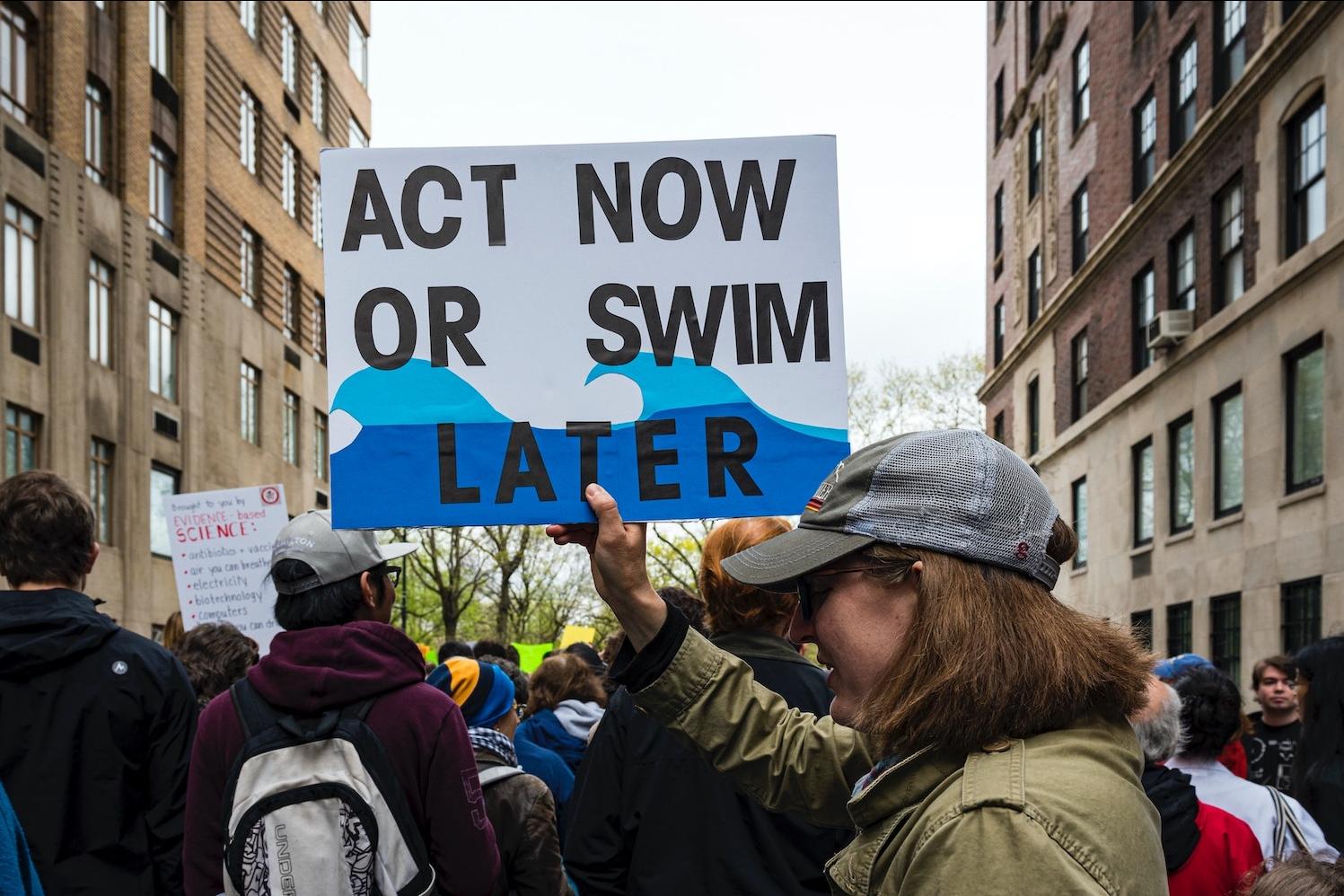
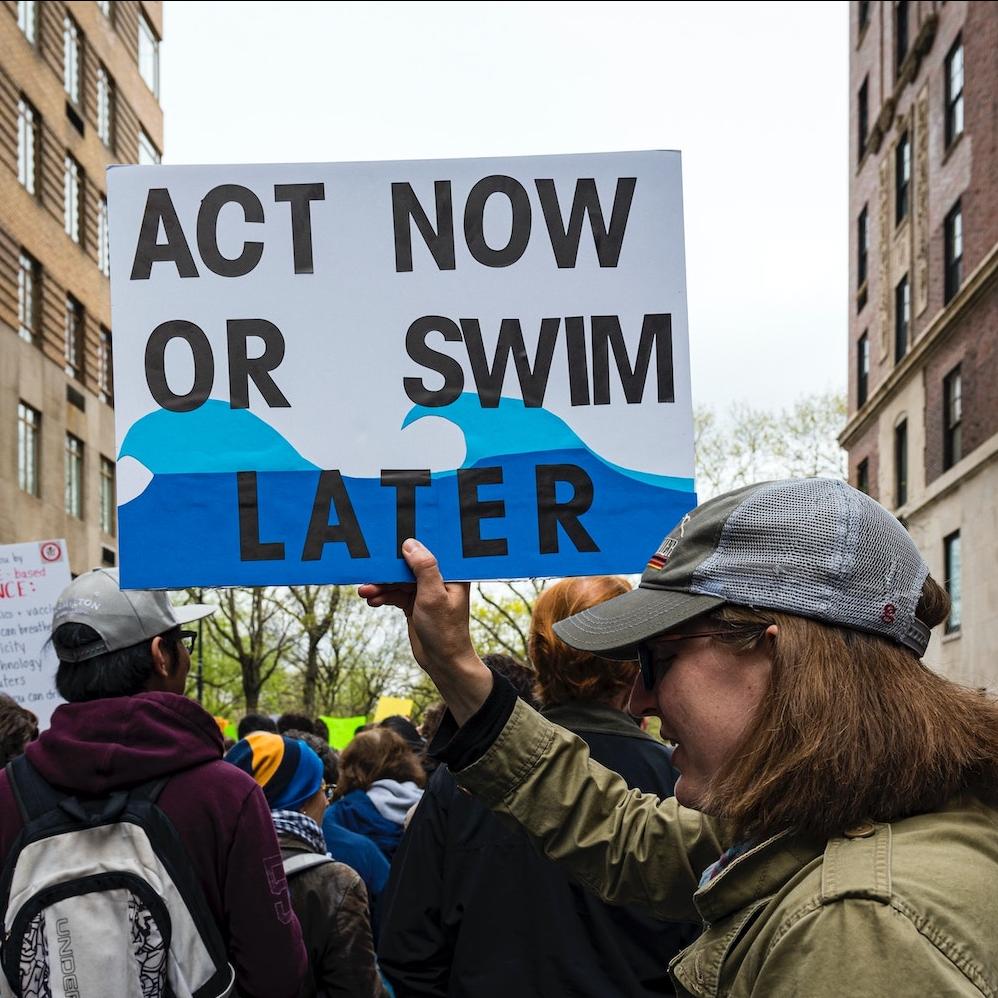
Demonstrators at the 2020 March for Science in New York City. (Image: Chris Boese/Unsplash)
With growing evidence that nearly all companies will miss their net-zero targets unless they double emissions-reduction rates, some companies are biting the bullet and revising their targets. But that’s not necessarily a bad thing, as long as the new goals are backed by action.
Comfort shoe manufacturer Crocs drew attention for pushing back its commitment to achieve net-zero emissions by 2030, after its emissions increased by more than 45 percent last year compared to a year earlier. The company now aims to reach net-zero by 2040 instead. Oil giant BP also recently lowered its 2030 emissions reduction goal, from a range of 35 percent to 40 percent in the initial target to 20 percent to 30 percent as of February.
These companies are not outliers. More than 60 percent of the companies surveyed in a 2022 Accenture report have set targets far into the future or have no clear target date.
Coming clean on out-of-reach net-zero targets is a likely situation for many more companies as they get closer to 2030 or 2040 milestones on reducing their greenhouse gas emissions in line with global agreements to limit climate change. There are many reasons why companies might revise their targets — for example, a mismatch of ambition with the reality on the ground and slower-than-expected progress, or more accurate carbon accounting.
Ultimately, net-zero targets are only as good as their implementation plans.
Investors want transparency
The good news is that more companies are aiming for net-zero, even if they haven’t discovered the best path to get there. “Net-zero commitments now cover one-fifth of the world’s largest corporations and 68 percent of global GDP, compared to 16 percent in 2019,” according to the World Resources Institute.
Setting net-zero targets can be tricky, as Crocs and other companies have discovered. There is no standardized approach for setting a net-zero target, leading to a lack of transparency on the scope and boundary of the targets and how organizations will reach them. From that perspective, companies owning up to a target that can’t be met isn’t necessarily a bad thing.
"Many companies, even some of the leaders, are seeing gaps between where they can go with current strategies and initiatives and where they need to get to,” Meryl Richards, director of food and forest at the sustainability nonprofit Ceres, told TriplePundit.
Some companies have opted to set ambitious targets and figure out how to meet them as they go, while others prefer to know exactly how they will get there before making a commitment, Richards said. “I don't think one is necessarily more valid than the other. We need companies that are comfortable getting out in front and being leaders and setting the standard and encourage that ambition."
Given the need for ambition in the short term, she doesn’t think it’s a terrible thing for companies to adjust course as they go — as long as they stay on track to limit global warming to 1.5 degrees Celsius. "What investors are looking for is transparency around why a company had to adjust its net-zero strategy,” she said.
What would cause concern is if a company had to continually readjust its targets because it was experiencing growth. “That's where the forward-looking strategy is really needed to plan how you're going to integrate your emissions reduction strategy with that growth," she explained.
Why companies need a climate transition action plan
All of this trial and error is why investors want to see climate transition action plans, Richards said. “What investors are looking for [are] ambitious, science-based targets for companies to reduce their own emissions and an action-oriented plan for how to get there."
Climate transition action plans, also known as transition plans, clearly define how companies will take action in the near-term to meet the long-term goals necessary to limit global warming. In 2022, Ceres, the We Mean Business Coalition, CDP, the Environmental Defense Fund and Ramboll Consulting created a framework to help companies create and implement these transition plans.
Defining a clear path forward with transition planning can help to avoid a “scenario as we had with 2020 deforestation targets, where a number of companies committed to zero deforestation by 2020 and none of them met that goal because they didn't have implementation plans,” Richards said. “It was a target with no plan behind it.”
Yet a recent Ceres study indicates those lessons are not yet being applied to net-zero targets. In a March assessment of 50 large food companies, Ceres found only 27 had plans in place to reduce their Scope 3, or value chain, emissions. None of them hit all the marks for climate transition planning in their disclosures, according to the analysis.
How to ensure real net-zero progress
Along with setting science-based targets, companies need to integrate their climate strategy across every aspect of their operations to ensure realistic progress toward those targets, Richards said.
“For example, when we get on a call with a company to discuss a climate transition action plan, and they’ve got representation from procurement, [research and development] and sustainability, we know they’re serious about it,” she said. “The leading companies are getting granular about their sources of emissions," and they're transparent about gaps and how they will bridge them.
“Along the way, companies also discover opportunities like meeting consumer preferences for lower-emissions products,” she said. “Having the right plan in place is what will help companies avoid 2029 backpedaling.”
Image credit: Chris Boese/Unsplash
Sustainable Agriculture Comes Full Circle With Data Science
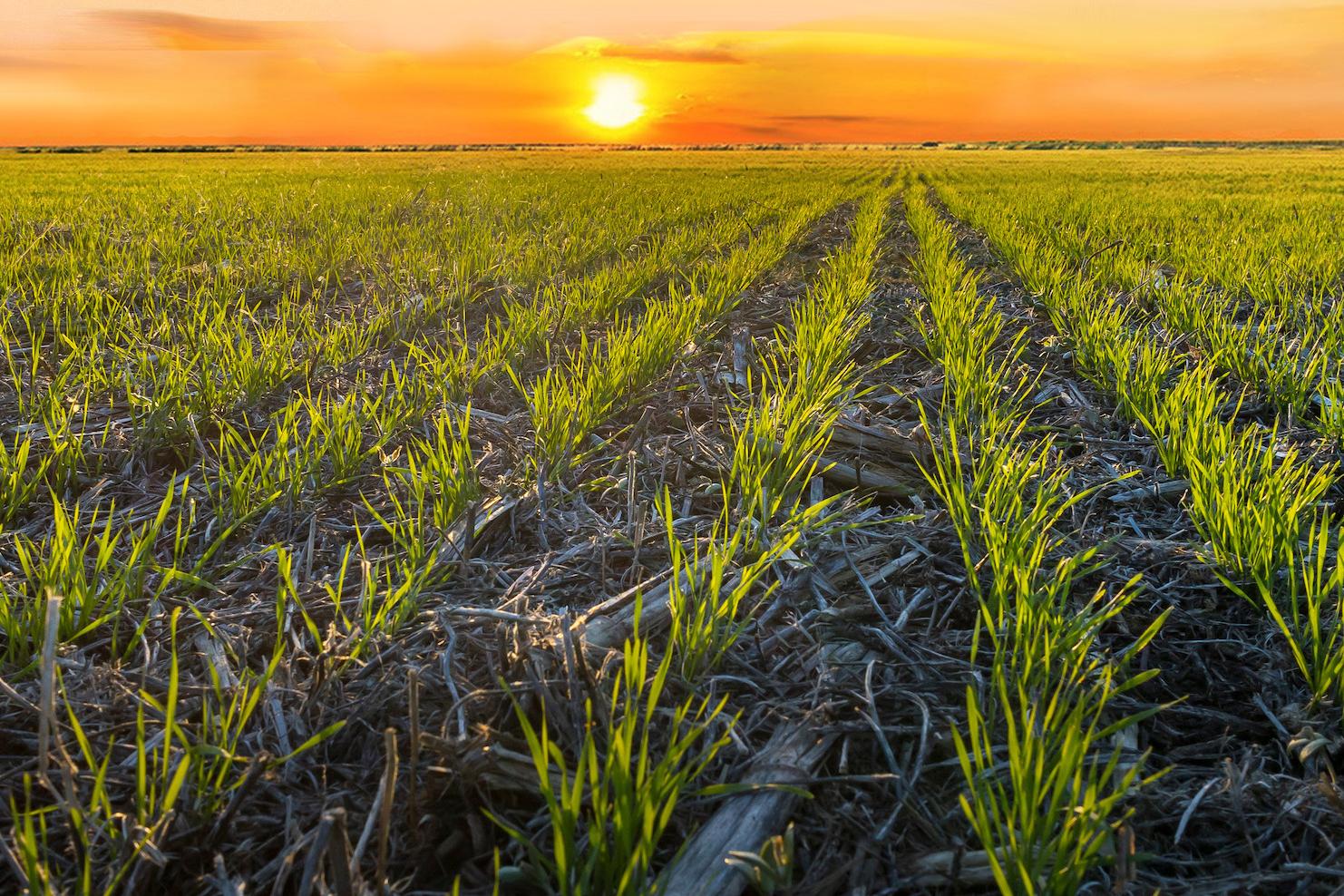
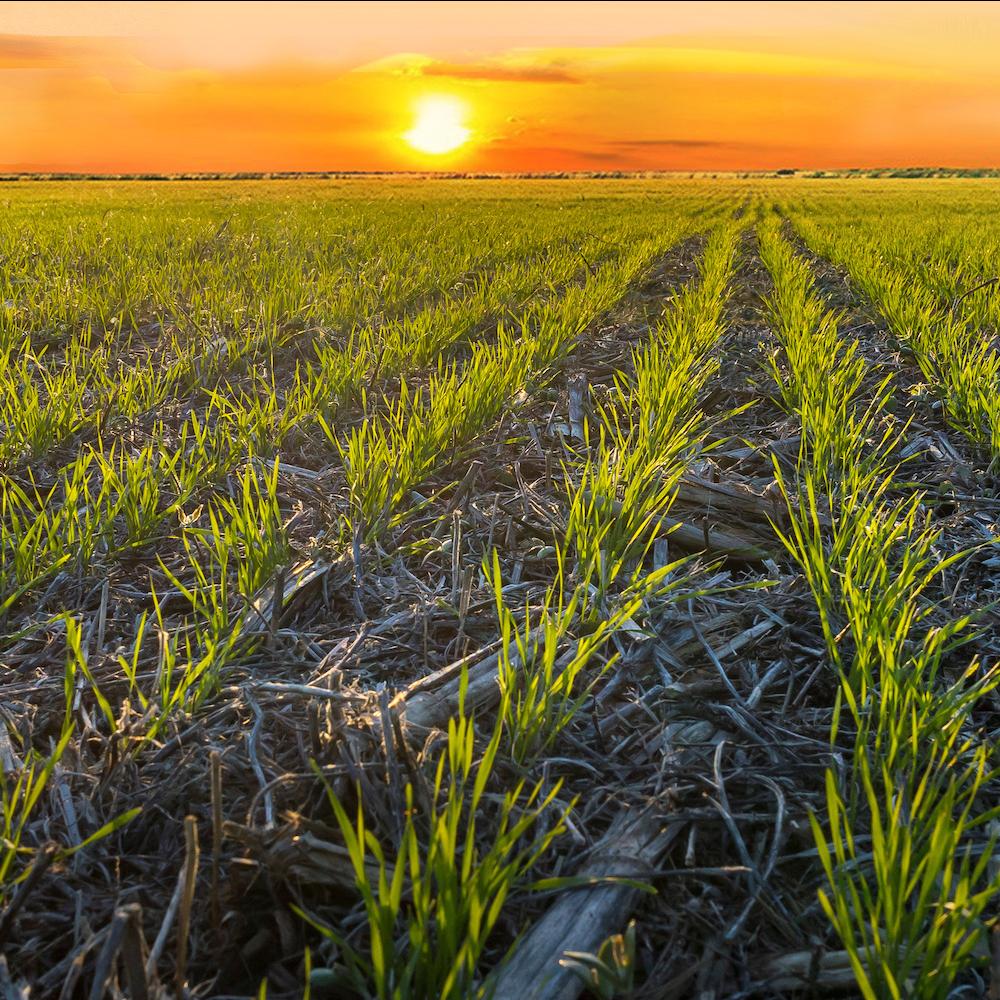
“Ancient wisdom meets futuristic technology” sounds like the concept for a new Hollywood blockbuster. But it’s the here-and-now direction of sustainable agriculture, supporting not only the planet and its people, but also the profitability of every entity in the food production chain —from farmers to agribusinesses to brands in the consumer goods industry.
Thousands of years ago, civilizations leveraged cyclical flooding for irrigation, let the land “rest” (lay fallow) every seventh year, and used terraced farming to produce food sustainably for their people, as well as external trade and philanthropic support of the poor. In modern times, this wisdom of the ages took a back seat to mechanization and industrialization — with short-term positive output effects and long-term catastrophic ones, such as the Dust Bowl of the 1930s.
Over the last several decades, that same windswept stretch of country — Kansas, parts of Oklahoma and Colorado — has been among the regions reaping the benefits of sustainable agriculture, as are the companies reliant on farm products. Crop rotation, improved tillage and threshing techniques, as well as water-scarcity management advancements, make for better soil health and greater yield.
At the same time, climate change presents new challenges, such as water scarcity and increasingly severe and frequent extreme weather events. The good news is: Every region and every stakeholder in the agrarian economic system has an opportunity to be part of the global solution.
Environmental and economic solutions come together
Starting in 2013 and now operating in 14 countries, Indigo Ag set out to help the agriculture industry improve sustainability and profitability through the combination of science and technology — first with the use of microbes to improve soil and plant resiliency and soon adding project development and impact quantification of regenerative farming practices.
Indigo Ag’s Market+ Source program in particular links up farmers, agribusinesses, and food and apparel companies to source sustainable crops and quantify impact throughout the entire supply chain.
For corporations, this program enables them to score a win in improving the accuracy of their carbon footprints and in making progress toward their climate targets; and it does so while aligning to standards such as the Greenhouse Gas Protocol (GHGP) and Science Based Target initiative (SBTi). Market+ Source captures the measurements corporations need to support their Scope 3 claims for marketing, investment decision-making, and evolving industry standards, while supporting farmers to employ and scale the use of the practices that deliver these results.
Meeting any of these standards is a lot like detangling a fishing line: A company has to trace and document its suppliers’ practices and quantify what emissions are reduced. In agriculture, data science and technology are must-haves to accomplish this feat.
Rigorous data science, resourceful diplomacy
Jyoti Shankar, a principal data scientist at Indigo Ag, spoke with TriplePundit about both sides of the sustainable agriculture “adventure.” One is the complex data process, and the other is the human side of bringing related but separate types of companies and people together to collaborate.
On the data side, Indigo Ag avails itself of remote sensing data like satellite capture, as well as passive sensors and soil samples at farm sites, transaction and market data from various sources, and field experiments. Shankar analyzes and models the data to project the beneficial good of what is happening in the field, along the way looking for inconsistencies and missing data, so a love of sleuthing comes in handy. The data and analyses have to be scrupulously accurate to give multi-billion dollar global consumer brands the level of confidence required for use in Scope 3 emissions accounting, as Indigo Ag has been doing since 2019.
“We can simulate scenarios of potential regenerative farming practices or combinations of practices for farmers in our programs,” Shankar said. “Our goal is to determine the realistic impact of encouraging farmers to adopt more practices each year and/or increase their acreage of these practices. By managing the portfolio of practices adopted by farmers within our program, we can shape it to effectively reduce emissions and water used per unit of crop produced.”
The detective work is also needed when data comes from agribusinesses that still use manual or outdated technical systems, but it has to be coupled with a respect for the small companies that have vital information. Indigo strives for collaboration with such firms, becoming a technology provider to support their way of doing business, Shankar said.
“Scope 3 programs cannot succeed without the partnership of many supply chain partners. It’s a very fragmented industry, and the data is non-trivial,” she told us. “They are folks who have been in it for a long time, who have survived the longest with the least amount of margins.
How consumer brands benefit from sustainable agriculture
With consumers now highly tuned in to climate change and other environmental issues, many have demonstrated that their purchasing dollars will go to the brands that prove their commitment to sustainability through best practices. Increasingly, investors are seeking the same. Meanwhile, extreme weather and natural resource scarcity threaten the long-term viability of agricultural supply chains — making a clear business case for companies to push climate solutions forward. Therefore, data science and technology have a central role in providing that proof.
Post Holdings, known for its iconic cereal, snack and pet food brands, works with Indigo to quantify the climate impact of the sustainably grown wheat used in Airly crackers, a brand devoted to removing greenhouse gases. Airly is able to post its carbon reduction numbers on its website, thanks to the data Indigo provides.
“What we've seen is a real hunger from our growers for, ‘What else can I do?’” said Jennifer McKnight, Airly’s chief marketing officer. “With Indigo Ag, we've been bringing together world-leading scientists directly with the farmers to help answer that question. Every single year, we're getting better. The growers are learning from the scientists, the scientists are learning from the growers, and it creates that virtuous loop.”
McKnight’s last comment captures a sentiment numerous members of Indigo Ag’s team voiced as well: The partnership with farmers and agribusinesses is crucial.
What “tinkering” can teach us about sustainability
Shankar gets animated when talking about what Indigo Ag's data scientists learned about sustainable approaches out in Kansas fields. While Indigo Ag has a set of practices that are part of its programs, the company runs trials and pilots in partnership with farmers and various corporate brands. The successful ones become candidates for the toolbox.
Jeff Murphy, whose family has been farming in southeastern Kansas since the late 1800s, started a transition to manage the farm after graduating from Kansas State in 2015. With his management comes an interest in farming more economically while building soil health and stewarding the land. Currently 90 percent of the farm’s acres of corn, beans, soybeans, wheat, and cattle are raised with practices such as reduced tillage and cover crops — two core regenerative approaches that deliver positive environmental impact.
“I really want to reduce the input costs to increase profitability, as well as improve our soil and leave the land better than I found it for future generations,” Murphy said. Last year, he experimented with a field where he applied no herbicide. “If there is a way that we could get away from these chemicals, I think it would be good for everybody.”
All of Murphy’s land is dryland — meaning they do not irrigate — which can be challenging in a region that has suffered drought conditions in recent years.
To gain the benefits of natural weed suppression and increased water retention, Murphy began using cover crops three years ago on just 30 acres. He now has cover crops across 75 percent of his acres.
“The main thing I can say is, we had crops to harvest. A lot of my neighbors had zero. They had no moisture left and couldn’t plant at all,” Murphy said.
Less tillage, more cover crops, fewer chemicals or lesser quantities of them — all of these translate to fewer carbon emissions and greater water conservation. Further, such natural methodologies can encourage the return of native wildlife species to revive ecosystems.
“What we notice with farmers like Jeff is that they’re constantly experimenting,” Shankar said. “He's not playing with his livelihood. He's a businessman. But he's also tinkering. That tinkering is what we have to dial into.”
The data capture and analysis Indigo Ag conducts, along with its multi-pronged approach to assisting the sustainable agriculture supply chain, means less risk and greater resilience for farmers, agribusinesses, corporate brands, hungry people and animals, and a planet in need of climate relief from all quarters.
Based on these possibilities, the next "Field of Dreams" may be an entirely different movie.
Learn more from Indigo Ag about the progress being made to make agriculture more sustainable for people and the planet.
This article series is sponsored by Indigo Ag and produced by the TriplePundit editorial team.
Image credit: Adobe Stock
Child Labor in the USA: What Employers Need to Know
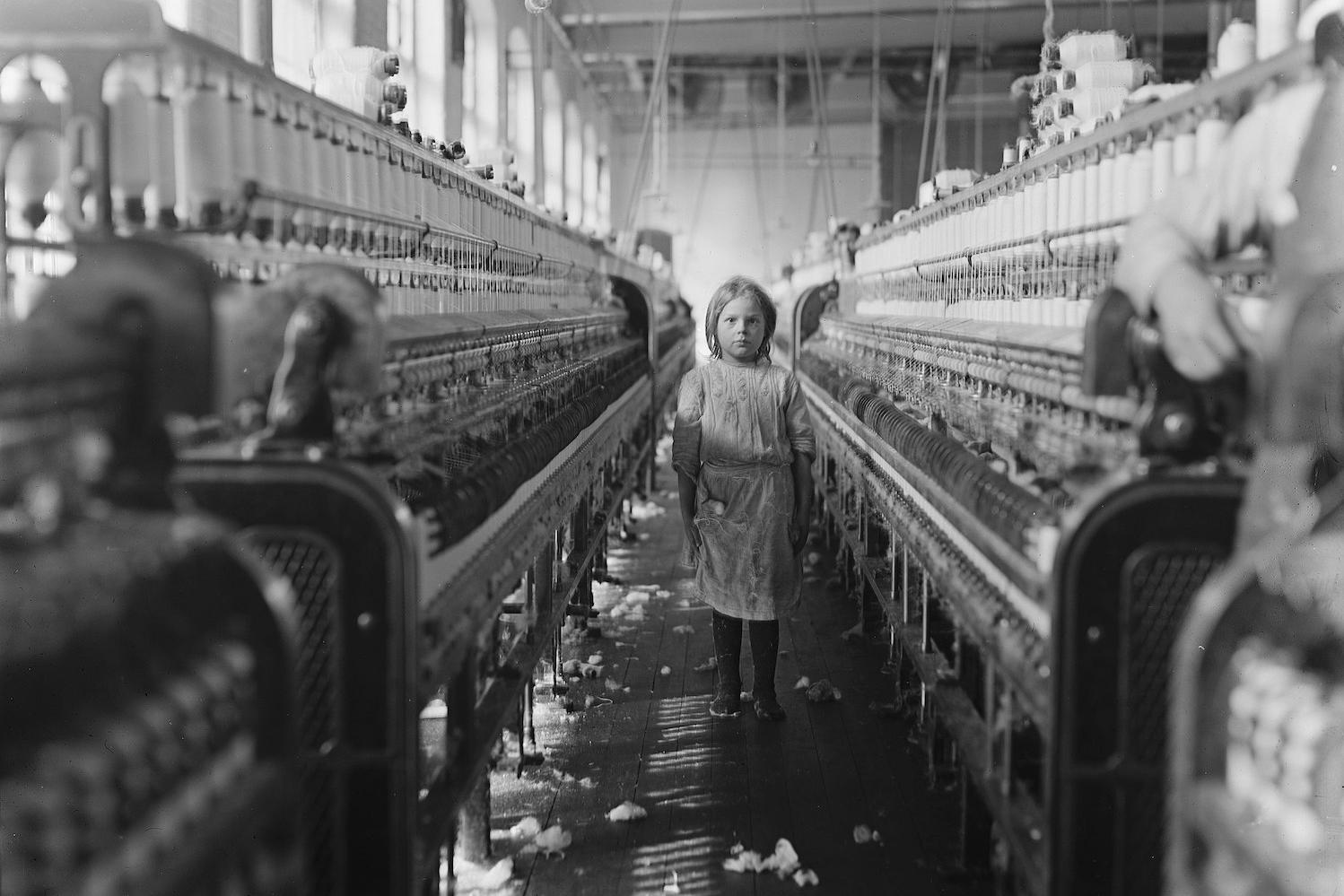

A "little spinner" photographed at a mill in Newberry, South Carolina, in 1908. (Image: U.S. Library of Congress via Wikimedia Commons)
A growing number of U.S. state legislatures are responding to labor shortages by relaxing the laws around child labor. That can be a relief for employers in job markets where immigration crackdowns and other factors have squeezed the pool of adult labor. Before hiring a child, though, businesses should take a close look at both the ethical and legal landscapes.
Education and child labor
Earning money with an after-school or summer job is a critical rite of passage for many children in the U.S. After-school and summer jobs can foster responsibility, teamwork, creativity, communication, independence, financial management and other life skills, and they often serve as a stepping stone to opportunities after high school.
However, students need to finish their K-12 education in order to advance in life, whether that means going on to a job, a trade school or an advanced degree. Work doesn’t necessarily impinge on that priority, but it easily can, especially for children who are already vulnerable due to their socioeconomic position or immigration status.
Exploitive child labor is a matter of national policy that can ripple throughout supply chains here in the U.S. as well as overseas. It concerns all businesses, whether or not they employ school-age workers.
Exploitive child labor also feeds into structural injustice. It closes the door on accumulating generational wealth and robs the national economy of potential talent, watering down the next generation of entrepreneurs, managers, professionals, researchers, academics and other education-dependent positions. Skilled trades can also lose potential workers who suffer injury or health impacts while still in school.
Child labor and federal law
Federal child labor laws come under the 1938 Fair Labor Standards Act (FLSA). As the U.S. Department of Labor explains, the FLSA is not intended to prevent work altogether. It is intended to prevent injury and loss of educational opportunity.
The FLSA generally prohibits employing children under the age of 14, but there are many exceptions. Also with exceptions, the law limits the hours minors under age 16 can work, and it sets specific standards for teenagers within certain jobs. Jobs classified as hazardous, such as operating power equipment, are generally off limits altogether for those under age 18.
Employers can find general guidance on federal child labor laws from the U.S. Department of Labor, which also provides overviews and updates on specific jobs. A link to state laws is included on the agency’s YouthRules! website for students, parents and employers.
The bad old days of child labor are still here
Children and laborers of all ages worked under horrific conditions in the U.S. before the FSLA was enacted, as recounted by the small business resource website WorkforceHub, a project of the human resources firm Swipeclock.
“In the cotton mills, children were often employed overnight for shifts of 12 hours a day. Cold water was thrown in their faces to keep them awake at night and accidents were common on the job,” the company notes.
Hazards can still occur today when children are employed illegally. Recent reports of children ages 13 to 17 working overnight shifts at a meatpacking plant have raised new concerns over enforcement of both state and federal child labor laws. Similar concerns have been raised over indications that unaccompanied immigrant minors are vulnerable to exploitation.
In February, the Labor Department issued a report that advocated for stiffer penalties. The agency cited a 69 percent increase in illegal child employment over the past five years.
“The maximum civil monetary penalty under current law for a child labor violation is $15,138 per child. That’s not high enough to be a deterrent for major profitable companies,” the Labor Department concluded.
In another study published in March, Jennifer Sherer and Nina Mast of the Economic Policy Institute also made the case for stronger laws. They took note of a decline in youth workforce participation over the past 20 years, indicating that more young people are continuing their education “in order to increase their long-term employability and earnings.”
“Putting off work in order to obtain more skills and education is a positive trend — for both individuals and the economy — not one that should be slowed or reversed,” Sherer and Mast argued.
States are responding to illegal child labor, but not in a good way
Despite evidence that illegal child labor is on the rise, almost a dozen states have passed legislation or introduced bills that loosen the laws, making enforcement all the more difficult.
Some of the new laws appear to be consistent with the FSLA health and safety standards. For example, New Jersey recently extended the permissible hours for teens to work during vacations and other non-school days, as reported by Ariana Figueroa of the nonprofit news organization New Jersey Monitor. The New Jersey law also lowered the age for parental consent to obtain a teen work permit. However, both teens and their employers must still register with the state’s Department of Labor. A new online “working papers” portal could help support enforcement and prevent exploitation, though that remains to be seen.
In other states, the situation is more concerning. Figueroa takes note of a new bill in Ohio that would enable employers to keep teens under age 18 on the job until 9 p.m. on school nights, up from 7 p.m. A similar bill in Missouri would raise the school-night work limit from 7 p.m. to 10 p.m. for 16- and 17-year-olds.
In Iowa, the legislature is considering a bill to regarding the employment of children as young as 14 in roofing, mining and other dangerous occupations. Industry advocates promote such work as training programs, but critics point out that training programs can be just as dangerous.
"A kid can still lose an arm in a work-based learning program," Charlie Wishman, president of the Iowa Federation of Labor, AFL-CIO, told the Des Moines Register.
What businesses can do
In one indication that illegal child labor is nearing a crisis, on March 24 the U.S. departments of Labor and Health and Human Services announced a new Memorandum of Understanding that formalizes their joint efforts to enforce FSLA standards.
The new MOU “represents unprecedented steps to maximize collaboration between the two agencies to prevent and address illegal child labor,” according to the Health and Human Services Department.
That is a step in the right direction. However, business leaders cannot drop the problem of illegal child labor in the hands of federal agencies at time when states are relaxing their laws.
Business leaders who are considering teen job applicants need to refresh their knowledge of state child labor laws. They also need to be aware of new state legislation that runs counter to the protective aims of FSLA standards.
Above all, business leaders need to help reform exploitive age-based wage systems. “At the state level, lawmakers should eliminate subminimum wages for youth and raise the minimum wage, eliminate the two-tiered system that fails to protect children from hazardous or excessive work in agriculture, strengthen labor standards enforcement, and empower young people to build and strengthen unions,” Sherer and Mast recommended in their report for EPI.
That may be a bitter pill for employers to swallow in terms of direct labor costs, but it is one that business leaders who profess to care about education and child welfare will have to take. That is, if they truly care about these things.
How Brands Can Step Up to Better Support LGBTQ Employees


Pride Month is meant to be a joyful celebration of the LGBTQ community and a rallying cry for justice and inclusion. But this year's celebrations are dampened by a disturbing rise in anti-LGBTQ legislation and rhetoric across the United States. Considering a third of our lives are spent at work, employers have a significant role to play in creating safe and inclusive spaces for people in the community who feel increasingly under attack.
The explosion of anti-LGBTQ legislation runs counter to public opinion
The American Civil Liberties Union (ACLU) is tracking 491 pieces of anti-LGBTQ legislation making their way through statehouses across the country. The scope of these bills include weakening anti-discrimination laws, censoring discussion of LGBTQ issues and history in schools, restricting gender-affirming care for transgender people, and banning LGBTQ gatherings like drag shows.
As state lawmakers look to push this type of discriminatory legislation through, many have adopted increasingly extreme anti-LGBTQ rhetoric. Groups of their fans and followers have done the same, in person and online, including a coordinated campaign against brands promoting inclusion during Pride Month.
The surge in discriminatory legislation and rhetoric could lead people to believe the public's attitudes have shifted when it comes to welcoming and including people in the community. But data indicates that's far from true.
Recent polling from GLAAD and the Public Religion Research Institute (PRRI) found that support for equal rights is increasing, not decreasing. In the GLAAD survey, 91 percent of non-LGBTQ Americans agreed that LGBTQ people "should have the freedom to live their life and not be discriminated against," and 84 percent support equal rights for the community. Similarly, 8 in 10 respondents to the PRRI survey are in favor of laws that shield people in the community from discrimination.

The discriminatory climate is taking a toll on LGBTQ people at work
A study released last week by Indeed sheds light on how discriminatory policies and rhetoric are affecting LGBTQ people in the workplace. The majority of LGBTQ respondents (60 percent) report experiencing discrimination at work, ranging from being passed over for promotions and raises to outright harassment and violence. More than a quarter of LGBTQ people, including over 30 percent of trans people, say they are not out at work.
"This climate of fear and intimidation comes on the heels of hard-earned fights for employers to do better by LGTBQ+ communities," journalist S. Mitra Kalita, CEO of URL Media, wrote on Charter this week. "That’s all at risk as literally hundreds of bills seek to obliterate the existence of our colleagues."
She spoke with three LGBTQ and workplace experts about what brands can do to better support their employees. The results are insightful and well worth a read in full. “Work continues to be a major source of stress for LGBTQ+ professionals, especially with rising anti-LGBTQ+ legislation which has a direct impact on access to economic opportunity,” Andrew McCaskill, who works on LinkedIn’s communications team and authors The Black Guy in Marketing newsletter, told Kalita.
So, what are other leaders saying about what brands can do to support employees better?
How brands can step up to better support LGBTQ employees
Offer LGBTQ-specific benefits. Over half of LGBTQ employees want to see benefits that are specific to their community, but less than a quarter report having any in their current workplace, according to Indeed's survey. Benefits employees are seeking include health insurance that covers LGBTQ-friendly providers and gender-affirming care, benefits that extend to domestic partners rather than solely spouses, mental health benefits, and paid caregiver leave.
In many cases, these are benefits employers already offer, but they haven't modified them to be inclusive of all their employees. In its guidance for LGBTQ inclusion in the workplace, the Society for Human Resource Management (SHRM) — which represents 325,000 HR professionals across 165 countries — recommends employers revisit their policies and practices to ensure they are equally available to all employees.
Check your culture. Creating inclusive benefits packages and corporate policies is an important baseline, but "having a written policy isn't enough," SHRM's guide reminds employers. "Even if an employee is in a workplace with internal policies that protect LGBTQ+ workers, a company's culture may inhibit employees from bringing their whole selves to work."
LGBTQ-specific diversity training — another benefit highlighted by employees in Indeed's survey — is a solid first step for educating your teams about how to avoid, spot, and stamp out microaggressions and discrimination against their colleagues. So is setting clear, values-based expectations for employees, such as respecting others. Even dress codes can set the tone for how people show up at work. "Make sure they are neutral without gender stereotypes," SHRM recommends. "General Motors gained national attention when CEO Mary Barra replaced a 10-page dress code with two words: Dress appropriately."
Lift up diverse leaders. “If employees are hearing from the same types of individuals, they’re seeing that a clear mark of success [to their employer] isn’t someone who looks or sounds like them," Sabrina Kent of the National LGBT Chamber of Commerce told the Story Exchange.
When recruiting, make it clear that your company is an equal opportunity employer, and ensure you interview and consider diverse candidates rather than quickly deciding on someone who looks and lives like you. Do the same when choosing who will head up projects, present during meetings and lead teams. The more you lift up leaders from all backgrounds, including LGBTQ people and those from other historically marginalized communities, the more your employees get the message that you want every one of them to succeed.
Use your marketing to raise awareness. Your company's voice matters in the fight for inclusion. In its recommendations for corporate allies, GLAAD calls on companies to use their marketing materials and social media to speak out against discriminatory legislation and support "Pride 365," running inclusive campaigns throughout the year rather than solely during Pride Month. Even better, engage LGBTQ-owned media companies to help you get the message out.
Flex your political muscles. "Extend support to the political fight," GLAAD challenges business leaders. "True corporate allies do not donate to candidates or elected officials who introduce, vote yes, or otherwise support anti-LGBTQ legislation or block passage of pro-LGBTQ legislation like the Equality Act."
Beyond revisiting your political donations, GLAAD called out Apple as an example of how companies can step into the role of political ally. "Amidst an unprecedented wave of anti-LGBTQ legislation in 2022, Apple utilized multiple offices to take action. Apple lobbied against these harmful bills, filled court briefs in cases involving LGBTQ people, and encouraged other large companies to take public stands against this legislation," GLAAD observed.
The bottom line
LGBTQ employees work day in and day out to make their companies successful, and with discrimination on the rise, employers have a responsibility to them.
Failing to live up to that responsibility tells employees — whether they're part of the community or not — that your company ignores or tacitly approves of an increasingly hostile climate that threatens people's well-being. Decision-makers at any company that claims to lead with values and purpose certainly wouldn't want to send that message. And with leaders creating clear blueprints for inclusion, there's really no excuse for companies not to do better.
Image credit: Jose Pablo Garcia/Unsplash
More Clean Energy on Less Land? This Report Reveals It's More Than Possible


Renewable energy sources like solar and wind are core to the energy transition as the U.S. looks to source 100 percent clean electricity by 2035 and move to a net-zero carbon economy by 2050. The problem is, when compared with other available energy sources — including fossil fuels — wind and solar installations take up the most space.
A new report from the Nature Conservancy looks to address the problem with strategies and recommendations for energy planners that maximize the advantages of clean, renewable energy while minimizing land use.
"Place-based" planning for renewable energy
Nels Johnson, senior practice advisor for renewable energy deployment at the conservancy, contrasts America's energy planning process with the elaborate planning system it uses for transportation projects. For example, many organizations, government agencies, and citizen groups collaborate on plans for roads, streets, and even bike paths that must meet certain criteria in order to get funding from the Federal Highway Administration.
“We don’t have anything like that in the United States for energy,” Johnson told TriplePundit. “We’re not suggesting it should be exactly like that, but it just shows how much planning goes into transportation compared to energy right now.”
Place-based planning in which all stakeholders play a role is necessary for decarbonization, limiting environmental and social impacts, and minimizing cost, according to the conservancy’s “Power of Place" report. Yet regional differences in resources, demographics, and land use and values make a one-size-fits-all approach impossible.
The reasons for taking a regional approach are obvious, Johnson said. For example, offshore wind farms like the ones built in the Northeast won’t work on the plains of Nebraska or Kansas — although wind is a significant source of clean energy in those areas. Likewise, the options for shifting to solar energy in the Great Plains are more limited than they are in southern U.S. states.
Clean power's land problem
Reaching a net-zero carbon economy by 2050 will require the nation to bring between 3,100 and 3,500 gigawatts of wind and solar generation capacity online, according to the report. Developing that much wind and solar infrastructure the way it’s typically done now would require more land than the state of Texas.
“When we have that much area needed to accommodate the project sizes for wind projects, for solar projects, for new transmission lines, we’re bound to have potential impacts to things that we care about,” Johnson told 3p. “Another challenge is that where we can put stuff isn’t totally a free choice. We're constrained by where transmission is [and] where utility substations are. And those determine where we can put that wind [and] that solar unless we build new transmission lines, which has been very difficult to do.”
On top of that, under current practices there is little or no spatial planning to balance new clean energy infrastructure with other local needs like housing, agriculture, industry and ecosystem health, Johnson said. The Nature Conservancy has an online tool called Site Renewables Right to help developers or energy buyers know what’s in every single acre in the U.S. in terms of the potential environmental impact, which can help with balancing the push for more renewables with local land needs.
Agrivoltaics: A major tool for using less land while installing more solar
One option for reducing the impact of clean energy development is the expanded use of agrivoltaics, a practice that integrates solar energy generation and agriculture on the same plot of land.
“Agrivoltaics has become quite a buzzword recently, and that’s a good thing,” said Nathan Cummins, Great Plains Division renewable energy programs director at the Nature Conservancy. “I think everyone’s starting to realize how much space we are going to need for this transition and the opportunity that can happen when we think about creative ways to deploy renewable energy that’s not just focused on getting clean energy, but focused on getting the best outcomes for communities, for conservation and for the environment.”
Agrivoltaics has been in use for some time now and is most commonly seen across the central U.S., Cummins said. “There’s always been a strong partnership between the agricultural sector and the renewable energy sector,” he told us.
Though data indicates the practice is compatible with most fruit and vegetable production, there are still knowledge gaps, Johnson said.
“What’s not known is how compatible agrovoltaics could be with large-scale grazing, for example, or with wheat or other crops that, at least theoretically and in research context, looks like it could really work,” he explained. “Once we unlock some of that information and get some practical experience, that could really show greater potential than our study showed in ‘Power of Place.’”
Even so, evidence shows significant opportunities for agrivoltaics in land sharing, making solar panels more efficient, and reducing the amount of water some crops use, Cummins said.
The bottom line
In its report, the conservancy does not shy away from saying there will be some increased costs for creating clean energy infrastructure, Johnson said. But greater use of agrivoltaics and other creative systems could spark innovation and provide incentives that help offset additional costs.
Large-scale corporate buyers of clean energy are helping to spur the development of the energy market, Cummins said. And they have an opportunity to be at the forefront of thinking about renewables differently.
“The Clean Energy Buyers Association estimates that about 42 percent of all large-scale renewable energy projects in the United States have been developed due to corporate demand [since 2014],” Cummins said. “These corporate buyers are your Googles, your Amazons, even new upstart companies like Rivian, et cetera, that are working to buy clean energy at a big scale. It's a way for a company to meet their broad ESG [environmental, social and governance] goals, beyond just the E.”
Image credit: Vincent Delsuc/Pexels
How to Keep Thrift Store Donations from Becoming Trash


Americans increasingly report a desire to change in order to do better by the planet and the climate. But that should mean more than swapping traditional products for environmentally-friendly alternatives. It’s also a matter of changing our core relationship with stuff. In doing so, we can drastically reduce our carbon footprint and our contribution to landfills.
Unfortunately, many of us are under the mistaken impression that we’re doing enough to reduce waste as long as we recycle and donate our unwanted items. But placing our trash in recycling bins — or “wish-cycling” — and donating our used stuff to a thrift store doesn’t necessarily mean it is being saved from the landfill. Just as a sizeable percentage of what gets put in the recycling bin can’t or won’t be recycled, donated items may also end up in the trash, depending on what is donated and where.
While it may feel good to drop a load off at the local thrift store, this can amount to nothing more than absolving ourselves of responsibility for the waste we have generated, effectively making it someone else’s problem. Fortunately, there is plenty we can do to limit what will be trashed or shipped overseas.
Local thrift store owners struggle to cope with an overabundance of stuff
The vast majority of clothing that is donated to a charity thrift store never makes it into someone else’s closet, with estimates putting the rate of resale for clothing donations in North America at around 20 percent. Items that can’t be resold in the U.S. and Canada are often repurposed or shipped overseas — meaning they're likely to become rags or compete with traditional textile-makers in other countries. Shipping and repurposing these items is no doubt carbon intensive. And that’s on top of the emissions and resources that were used to produce them in the first place.
But clothing isn’t the only thing that is donated en masse to charity thrift shops, and statistics on what becomes of all of the other stuff when it can’t be sold are harder to pin down. My brother, Paul, salvages items from an independent charity thrift store dumpster in Oregon and finds a variety of things that still have plenty of use left in them. “I do see a lot of kitchen supplies — you know, plates, cups. I see a lot of artwork, like paintings that go on the wall. A lot of toys, like kids’ toys. So many kids’ toys!” he told me in an interview for TriplePundit.
He went on to list a slew of goods he has encountered: Christmas decorations, collectibles, food processors, Soda Streams, water purifiers and other kitchen gadgets, as well as electronics like tablets and printers.
“I find TVs in there. Not super often, but those have — usually by the time I get to them — the screens are broken on them. So I don't know if they were no good and they just weren't able to sell them or if they were already broken,” he mentioned, adding that the cords on some items such as food processors appear to have been purposefully cut so that they cannot be salvaged.
Clothing, on the other hand, makes up a tiny percentage of what he reports finding. “The clothing they do throw away, I think it’s because people are bringing it in dirty.”

From thrift store to side hustle
While Paul can’t say for sure what percentage of excess stuff in the thrift store dumpster is actually still usable, he estimates it's about 30 to 40 percent. And it’s way more than he can salvage on his own.
“I go in for two things. No. 1, if it's money valuable to try and sell it. No. 2, if it's something I can use for the house, or I think one of my friends can use it," he said. "Often I've gone to the dumpster and gotten everything I want out of it and then a friend, you know, told me later they went and they got a bunch of stuff from it. ... It's all relative. It's like, you know, I didn't want that stuff, but it's still good stuff ... so other people end up taking it.”
How to be part of the solution
The old adage "one person’s trash is another’s treasure" certainly rings true here. But it also begs the question: How can we take more responsibility for our stuff and ensure it doesn’t go from the donation bin to a dumpster?
Buy less. The first logical step is to stop and think before we buy. There's no hard data on how many tossed donations are the result of consumers upgrading to a newer version or changing out the aesthetic of their kitchen and home decor, but it is one possible explanation. And it’s well past time that we switch our mentality from buying whatever we want to focusing on what we actually need instead.
Kitchen gadgets are a prime example of this. Asking oneself a few key questions before making a purchase could help keep those small appliances from flooding thrift shops faster than they can be sold. Will we use it regularly, or is it just a novelty? How likely are we to keep it until it wears out? Do we already have something that serves the same purpose? These same questions can be applied to most of the stuff we buy.
Choose purpose over aesthetic. Likewise, before switching out dish sets or glassware, it’s a good idea to question our motivation. What’s wrong with what we already have? If it still serves its purpose, why replace it? Do we really need a new color scheme or design? Instead of replacing a set when a couple of items get broken or lost, consider buying replacements from a thrift store. After all, there is no shame in mismatched plates, utensils or anything else.
This same idea can be applied to any number of household items — from towels to bedding and so much more. Consider that the desire to have the latest aesthetically pleasing and perfectly matched sets is the result of advertising. It doesn’t actually enhance our quality of life. Additionally, when it comes to household items, decor and stuff in general, the best bet is to embrace minimalism.
Reconsider that gift. Oftentimes people will give gifts just to give them — leaving the recipient to wonder what they will do with it in the long run. Before giving a gift, ask: Is this something that will add value to their lives? It is thoughtful and useful? Or do they already own something similar? If a gift is likely to just add clutter or be disposed of, consider giving an experience instead.
Rehome unwanted items. The Washington Post’s Allyson Chiu suggests downgrading appropriate clothing to sleepwear or swapping unwanted clothes with friends instead of donating them. But the same concept can be applied to any number of items.
Paul agreed that a lot of the stuff that he sees thrown out could have been given directly to people in need. Consider contacting local churches and domestic violence shelters about donating to families that are getting back on their feet. Or list the item somewhere for cheap or free, such as Facebook Marketplace, Nextdoor or Freecycle.
Check the shelves. Before donating, it’s a good idea to check the store’s shelves for an overabundance of similar items. Employees may also be able to say whether the donation is in demand or likely to sell. Don’t pass it on if it’s broken or missing pieces. And if it’s dirty, be sure to clean it first.
The bottom line: Changing how we see stuff
Finding a new home for unwanted items may take more effort than dropping them in a donation bin, but it’s one way to lessen the chances of more stuff ending up in a landfill. Even better, minimize shopping and focus on needs instead of wants. And while none of us are perfect, we can do our best to eliminate waste from unnecessary purchases.
Image credits: Sikander/Wikimedia Commons and the author